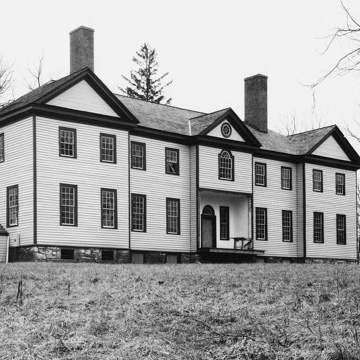One of the most impressive frame and weatherboard houses in the state, Farley boasts a 96-foot-long facade, marked by three pedimented pavilions. On the first floor are a suite of four reception rooms connected by a T-plan hall and two staircases. Built by William Champe Carter, of the Albemarle County branch of the ubiquitous Carter family, it was named Farley in honor of his wife, Maria Farley Carter. During the Civil War, Union General John Sedgwick used it as his headquarters during the battle of Brandy Station, the largest cavalry engagement in the history of the western hemisphere.
Brandy Station is also the projected site for a neotraditional village, Clevengers Corner, designed by Quinn Evans Architects of Washington, D.C. Intended to draw on Piedmont Virginia small-town vernacular forms, it is awaiting final county approvals.





